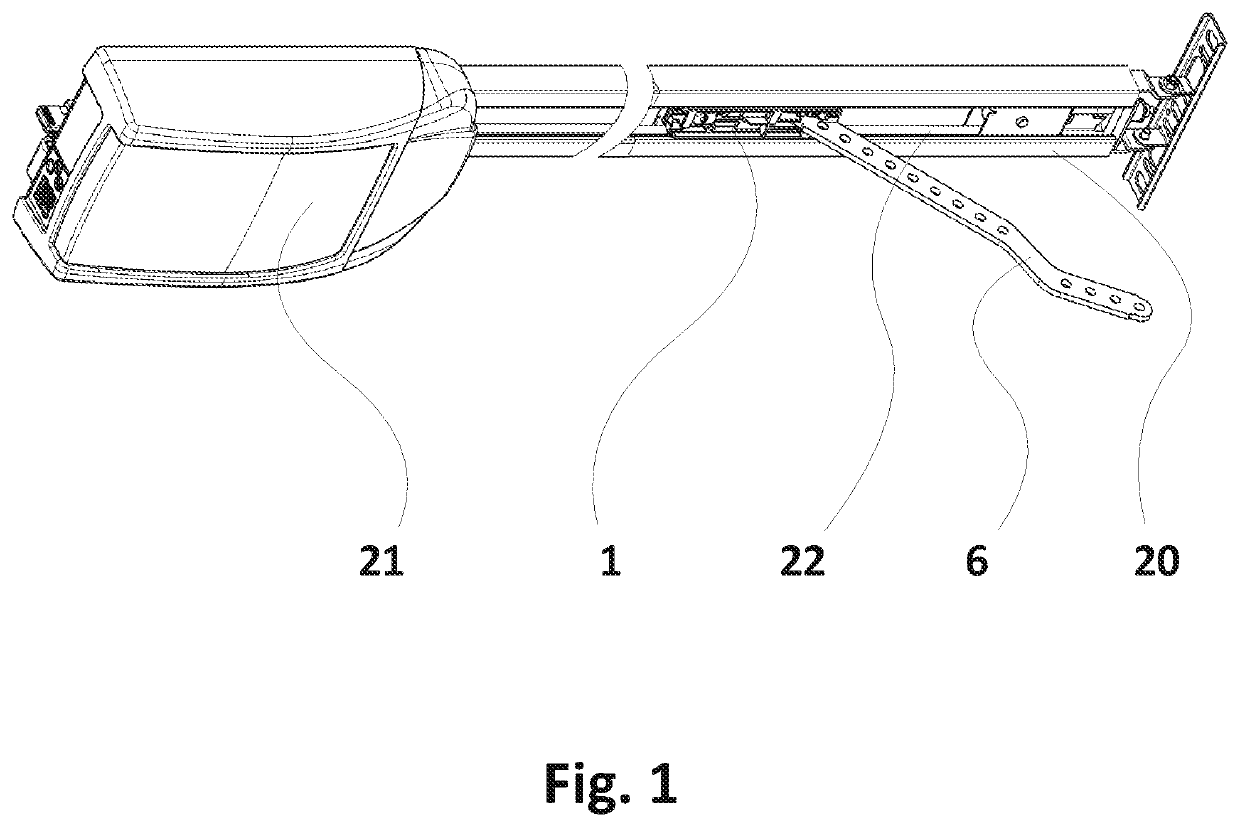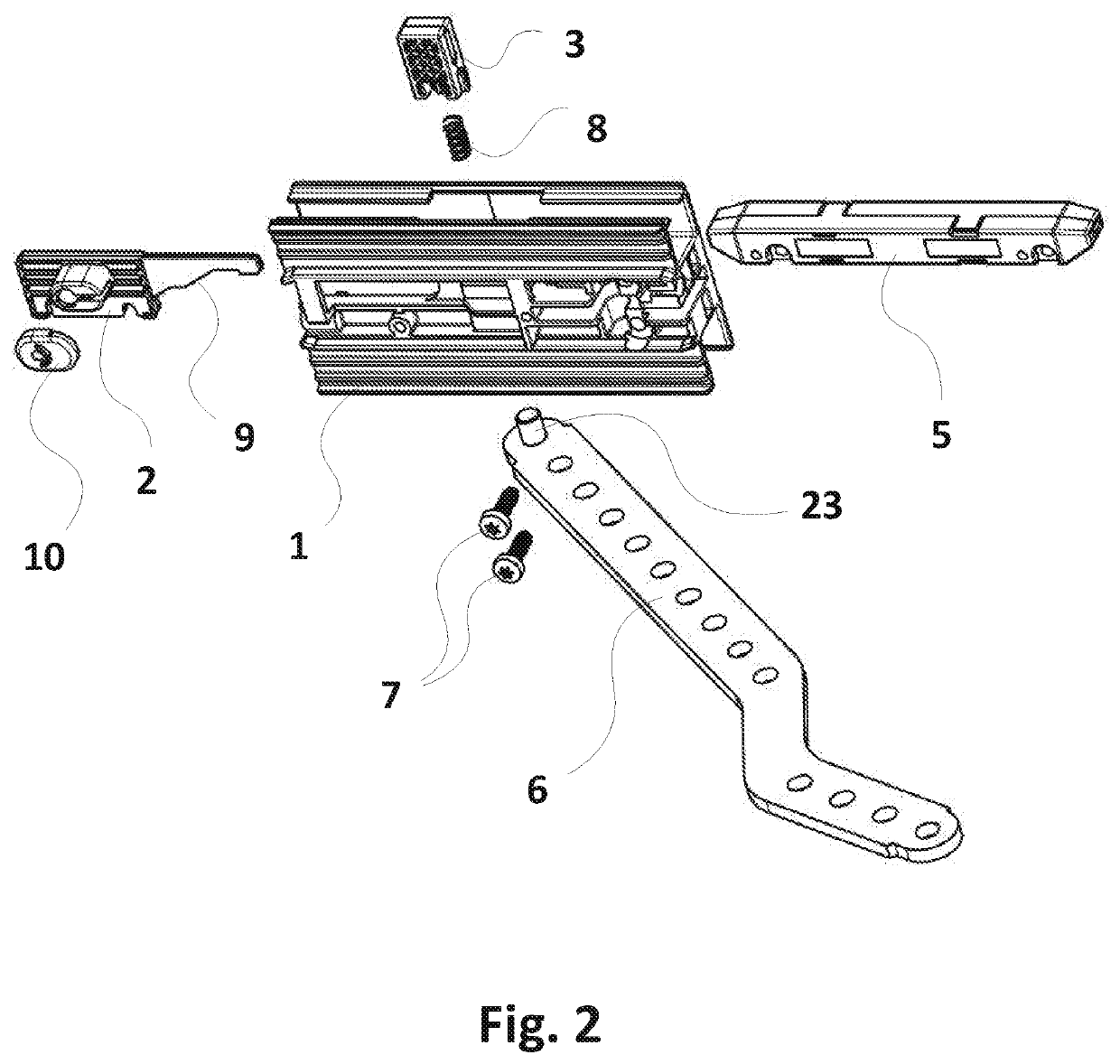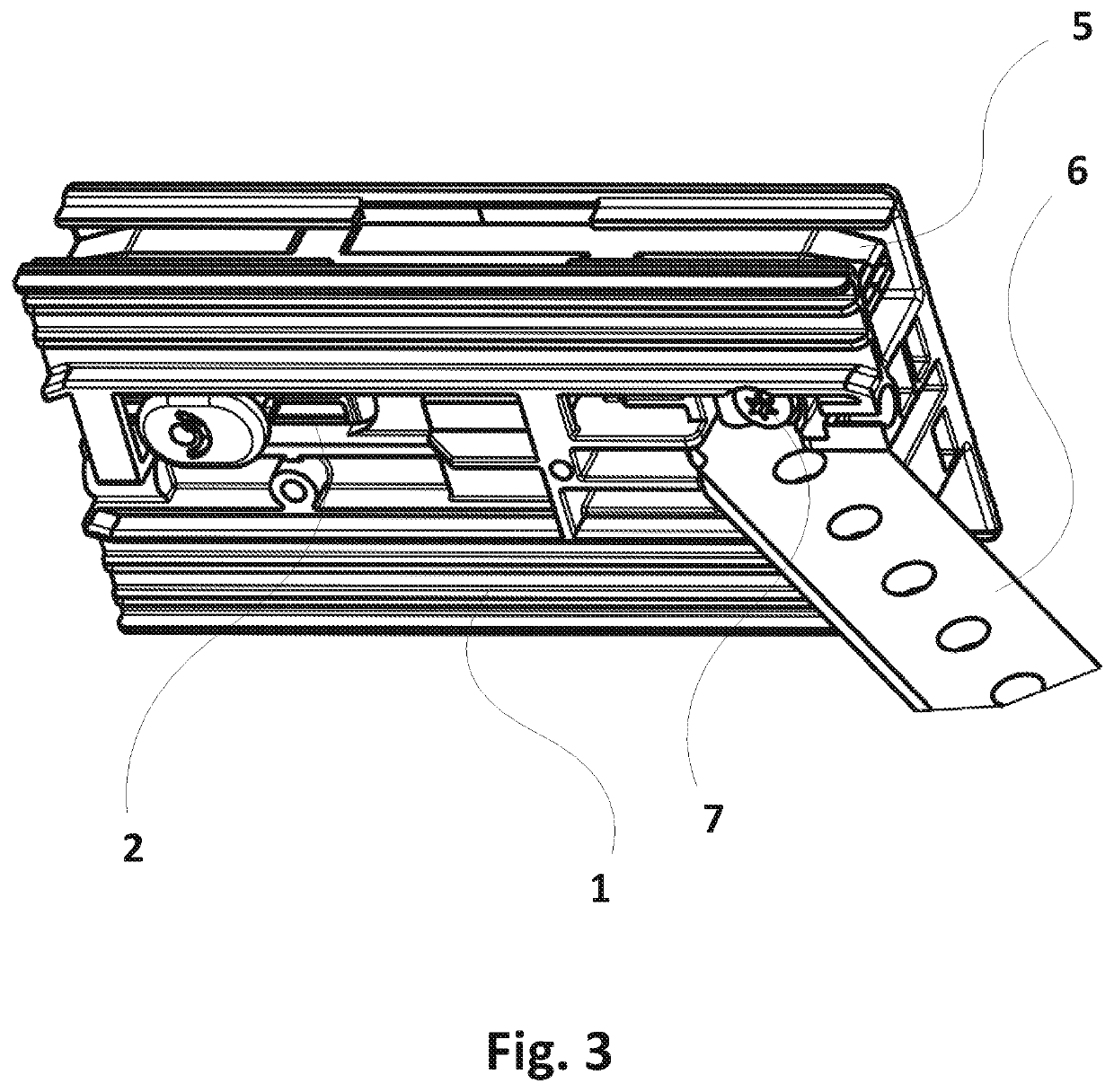Drive carriage for a door and door drive
- Summary
- Abstract
- Description
- Claims
- Application Information
AI Technical Summary
Benefits of technology
Problems solved by technology
Method used
Image
Examples
Embodiment Construction
[0031]FIG. 1 shows an exemplary embodiment of the door drive according to the disclosure, which comprises a motor unit with a drive motor 21 which drives a power transmission device 22 configured as a toothed belt which moves along a rail 20 proceeding from the drive motor 21. In the rail 20 a drive carriage according to the disclosure is shiftably mounted, which is linearly movable by the linear movement of the toothed belt 22. The drive carriage includes a door driver 6 configured as a bent rod, which is articulated to a door (not shown) and produces a connection between drive carriage and door. Thus, the door can be opened and closed by means of the drive motor 21. For assembly, the drive carriage is pushed into the rail 20.
[0032]In the following, an exemplary embodiment of the drive carriage according to the disclosure will now be described with reference to FIGS. 2-4.
[0033]FIG. 2 shows a perspective exploded view of the drive carriage according to the disclosure, which comprise...
PUM
 Login to View More
Login to View More Abstract
Description
Claims
Application Information
 Login to View More
Login to View More - R&D
- Intellectual Property
- Life Sciences
- Materials
- Tech Scout
- Unparalleled Data Quality
- Higher Quality Content
- 60% Fewer Hallucinations
Browse by: Latest US Patents, China's latest patents, Technical Efficacy Thesaurus, Application Domain, Technology Topic, Popular Technical Reports.
© 2025 PatSnap. All rights reserved.Legal|Privacy policy|Modern Slavery Act Transparency Statement|Sitemap|About US| Contact US: help@patsnap.com



